China goes green / China
From red to green
It builds one new coal power plant every week, and is the largest emitter of carbon emissions in the world. But as world leaders gather for Copenhagen’s climate change conference, China is also the nation that could save the planet.
An hour from Shanghai by train, past freshly sprouted skyscrapers on either side of the tracks, is the office of up-and-coming solar-panel manufacturer, Trina Solar. Every morning, hundreds of young workers whirr into the Changzhou industrial estate on electric motorbikes and plug them into a solar-powered charging unit outside Trina’s plant, before they file into the shiny modern buildings. The young technicians are part of the new generation riding the wave of China’s economic growth.
Dozens of recently hired workers march up and down outside the office as a manager with a loudspeaker urges them to sing a patriotic song at the top of their voices. Some of them giggle as they see a foreigner. “The one thing people are not shy about in China is singing,” says Thomas Young, Trina’s director of investor relations, as we walk past the teenagers and into the solar plant, where silicon is heated inside man-sized egg-shaped metal casings – the first stage of making a solar panel.
Trina is just one of an increasing number of green-tech companies mushrooming all over China because of the growing global market for their technology. And since its leaders have now recognized the importance of reducing carbon emissions, the country has begun to think green and there is potential, in future, for a huge demand for green technology right here.
All across China – from shops selling organic products in the big cities to solar, wind and hydropower companies, waste recycling firms and rechargeable batteries – greentech has become a much bigger force in the economy. Many of China’s entrepreneurs have set their sights on global domination of the industry within the next 10 years.
In some ways, the workforce is suited to these environmentally conscious times; not so long ago there were fields at Changzhou industrial estate, and the grandparents of these young factory workers were peasants. “There is not a long tradition here of wasting energy. People turned the lights out to save money. The clean way of life is the only way many people have ever known,” says Young, who moved to Changzhou after working for a Beijing venture capital firm. “The speed of wealth creation in the green sector has been remarkable,” says Rupert Hoogewerf, compiler of the Hurun Rich List, which ranks China’s wealthiest businessmen. “There is a myth that Chinese companies are not creative, but there is great creativity here. People are doing amazing things,” he adds.
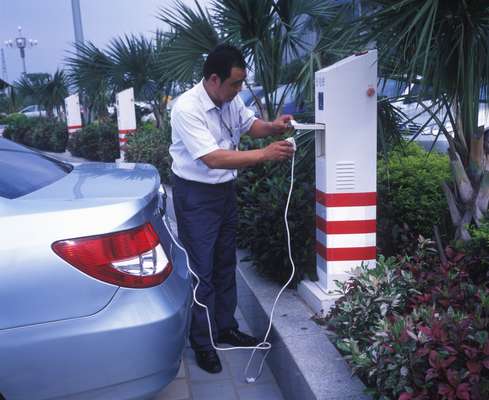

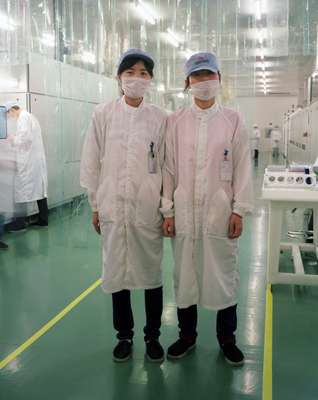

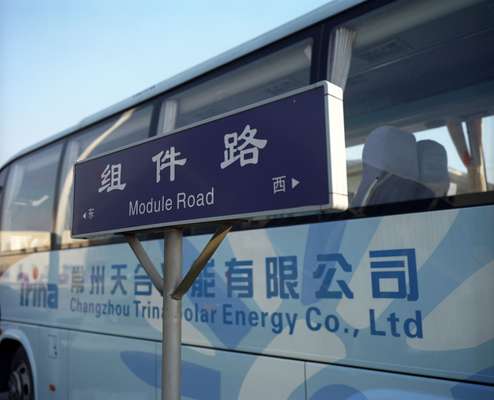

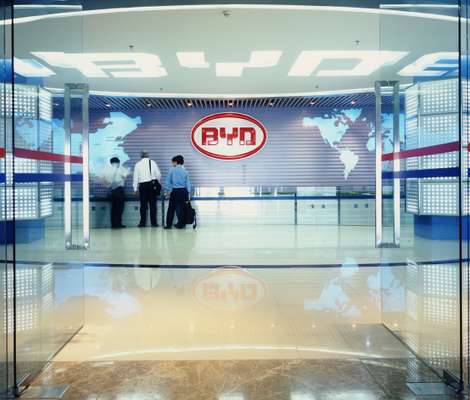
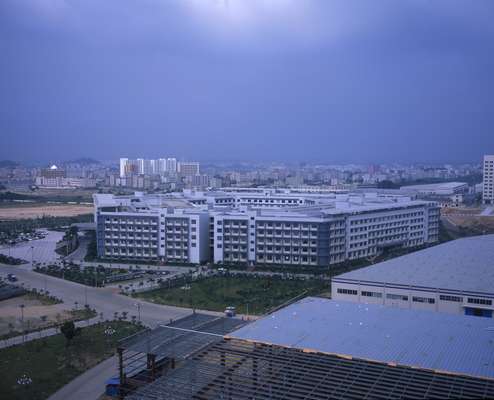

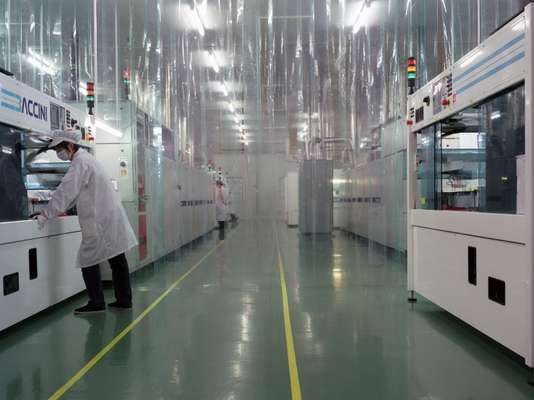


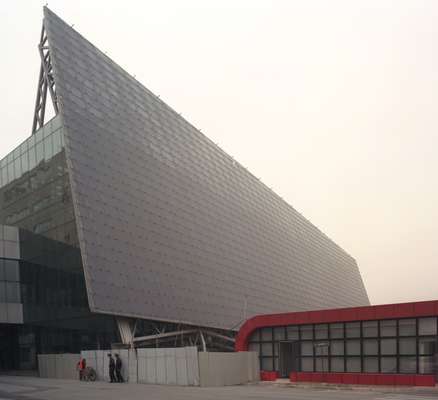

In Shenzhen, at the giant plant of BYD, which stands for Build Your Dreams, 15,000 of the 130,000 staff are employed solely to research and design new models including environmentally friendly cars, solar panels and electric lighting. The company’s plant is almost like a small city and researchers work in a hexagonal building that bears an uncanny resemblance to the Pentagon.
The firm’s workers have come from all over the country, and are housed in purpose-built high-rise buildings walking distance away.
BYD, which started out making batteries in 1995, is owned by China’s richest man, Wang Chuanfu. He shot to the top of the rich list this year after Warren Buffett bought 10 per cent of the company. BYD is now a world leader in green technology and is due to roll out the new e6, a prototype of a fully battery-powered car that, according to BYD, can travel 400km on a single charge, in December.
Other companies, such as Suntech Power have proven in the last decade that China is now a major player in the green technology industry. “Many were sceptical that Suntech would be able to compete with BP Solar, Sharp and other multi-national conglomerates that dominated the industry,” says Suntech spokesman Rory Macpherson, at the company’s factory in Wuxi, near Changzhou. Suntech is now one of the world’s largest solar panel manufacturers. But while China’s green entrepreneurs are soaring ahead, the country itself still has a long way to go. China will be under huge pressure to do more to stop Climate Change at this December’s Copenhagen summit. It is the world’s biggest emitter of greenhouse gases (although its emissions are still very low per capita). As China gets richer, emissions will rise so it will have to make its growth more sustainable.
“There is no longer any such thing as getting rich dirty and quickly and cleaning up later,” architect Rob Watson says. “The environmental problems in China are so pressing that there is no later.” Watson, founder of the LEED green building standard, has worked closely with Chinese officials for several years. If inaction continues, he adds, the country’s health and productivity will decline. According to Greenpeace, 70 per cent of China’s rivers, lakes and reservoirs are not safe for human use, while in arid northern China, one-third of the water is so polluted it cannot be used for any purpose, agricultural or industrial.
“Every day Chinese people swallow and breath this pollution, so to them it is not an abstract problem,” says Peggy Liu, chairperson of the Joint US-China Collaboration on Clean Energy. The air in some Chinese cities is often soupy and thick with dust, rendering it hard to breathe, while the skies are shaded with a brown smog. But now, for example, the streets of Shanghai are lined with recycling bins, and the city is host to the country’s first carbon-neutral hotel. China is also the world’s biggest market for solar water heaters, with one in 10 families already using the technology and as many as 30 per cent of households expected to use them by 2015. In some cities, 99 per cent of households use them.
“China’s leadership has accepted that climate change is caused by humans and recognises that it must do its part to improve the situation,” Zhou Dadi, former head of the NDRC Energy Research Institute has said. China has set aggressive goals for renewable energy development and now has tighter vehicle fuel-economy controls than the US; its standard is 36.7 miles per gallon (mpg) and may be raised to 42.2 mpg by 2015. The US’s standards currently weigh in at 27.5 mpg, although Obama wants to raise those standards to 39 mpg by 2016. By 2020, China aims to get 15 per cent of its energy from renewable sources. It has introduced subsidies for solar power, while wind-power capacity is set to double over the next year. “It is very exciting to see the changes in attitudes to the environment in China over the last year,” says scientist Liu Zhenning, who has spent the last eight years in Boston. He is now a senior R&D engineer for ENN Group, a gas distributor developing ways to generate clean power from coal.
ENN is developing a process that uses algae to absorb carbon dioxide emissions from heavy industry and then turns the algae into biofuel. At the plant in Langfang, panels covered in algae bubble with green liquid as micro-organisms gobble up carbon dioxide, and there are fridges full of glass vials in different shades of green. Officials at traditional state-owned industry, from iron to cement through to power generation, have been beating a path to ENN’s door to know how their micro-algae technology might help them.
“In the past, state-owned enterprises did not have the incentive to make their businesses cleaner. But right now the government is forcing them to take action,” says Liu. Local officials have long favoured mega construction projects, but are now looking to impress Beijing with their green building credentials, even if they still only have the haziest notion of what environmental protection actually involves.
James Brearley, an Australian architect with a Shanghai-based business, says that his company BAU is getting more enquiries about green building and development. “It is nothing to do with climate change. People think it pays to go green and it might help to sell land in their city, although they are only just beginning to understand what environmental protection is all about,” he says.
And green living is starting to be fashionable. Younger generations will have much more of a clue, says Eugenia Yen, who is advising the YK Pao school in Shanghai on how to build a new campus with sustainable buildings and green energy-saving technology.
“At the beginning a lot of local people didn’t understand what we were doing, but when you explain that it will save money in the long-run as well as it being more healthy, people begin to get it,” says Yen. No one should underestimate how fast China is getting it.
COP15: the facts
In December, world leaders gather in Copenhagen to negotiate a new climate control deal to replace the Kyoto Protocol. It’s already looking as though a deal may be hard to reach.
Tell us who’s has been invited? Some 192 countries, five observer states, more than 50 international organisations and confederations and over 750 non-governmental organisations.
What’s the goal? A climate treaty to succeed the Kyoto Protocol. Forty seven countries consented to the emissions targets set in that agreement in 1997 (the first phase of the treaty expires in 2012). Copenhagen has set itself a target of at least 180 signatory nations. Most scientists agree that we must cut emissions to 80 per cent of 1990 levels to limit climate change.
What are the big questions they’ll be pondering? How much can industrialised countries cut emissions? How much can developing countries, such as China, limit the growth of emissions? Oh, and that tricky one, whose fault is it all?
Who are the key players? The most important nations are China and the US, the two biggest producers of greenhouse gases. For any strategies to be successful, they must be supported by both countries – both have been reluctant to name targets. China and India believe it’s the responsibility of wealthier nations such as the US and the UK to set an example. Similarly, industrialised nations, by outsourcing their manufacturing elsewhere in the world, are seen by countries like China as effectively exporting their problems
Give me some hard data: Look at CO2 emissions to see who’ll be in the hot seat at Copenhagen. In the USA the figure stands at 20 tonnes, China 5 tonnes, India 2 tonnes, North Africa less than 1 tonne. The largest percentage increase since 1990 is Belize which is up 213 per cent. The prize for the largest percentage decrease since 1990 goes to the Solomon Islands, down 66 per cent. And 17 countries are responsible for 80 per cent of all emissions.
Why else do we need a deal? Cheer yourself up with comments of the UN Intergovernmental Panel on Climate Change. It says that climate change can lead to increases in the frequency of hot extremes, heat waves and heavy precipitation and the possible elimination of the Greenland ice sheet and a resulting contribution to sea level rise of about 7m. And in Africa, by 2020, between 75 and 250 million people are projected to be exposed to water stress due to climate change.
Electric dreams
The city of Changzhou has dramatically cut back air pollution by banning gas-fuelled motorbikes in the city centre. Instead, thousands of workers in the city of 3.5 million people head to work on electric bikes. China is now the world’s number one market for electric bikes, with 65m on the road – more than the number of passenger vehicles. Yearly production of electric bikes is now 22m, up from 200,000 eight years ago.
Changzhou is also a hub for the solar industry, thanks to Trina Solar. To boost the industry, the city has set aside land to expand the industrial park for companies making components used in the manufacture of solar panels and has made the development of the renewable energy industry one of its top goals, according to Dai Xiaowen, vice-director of the Changzhou National Hi-tech District.
Changzhou local government also plans energy saving measures at government departments, schools, hospitals and in street lighting, he says.


